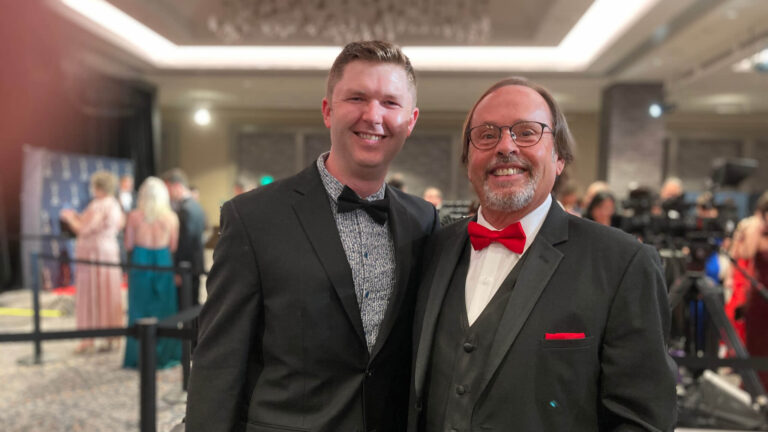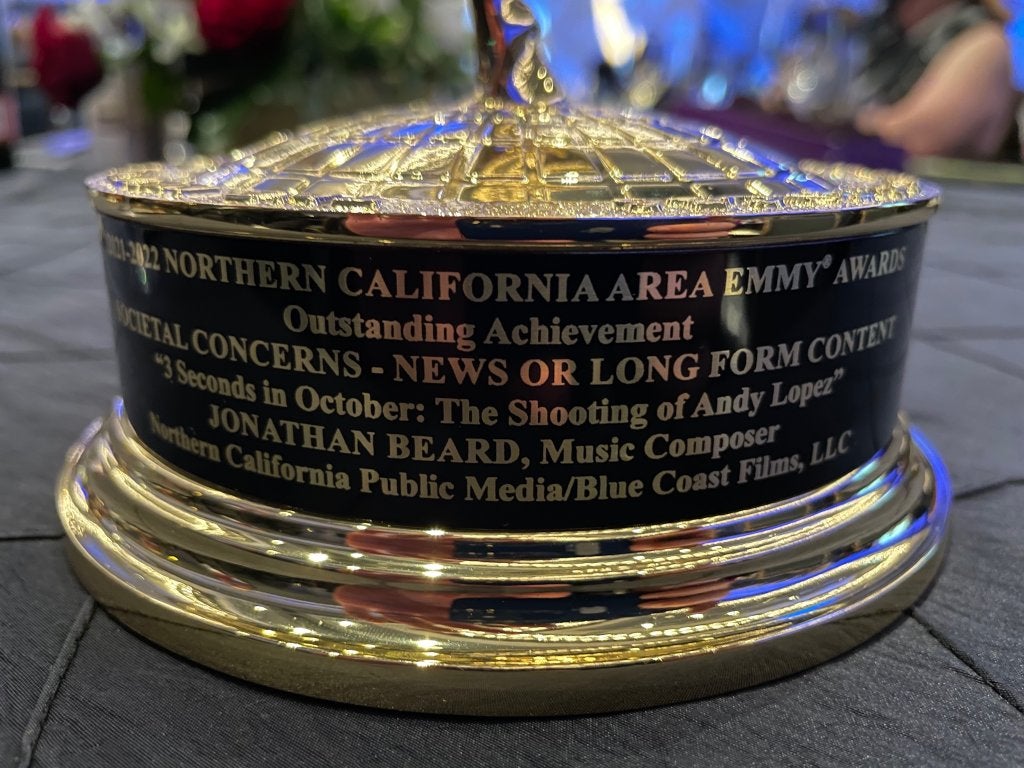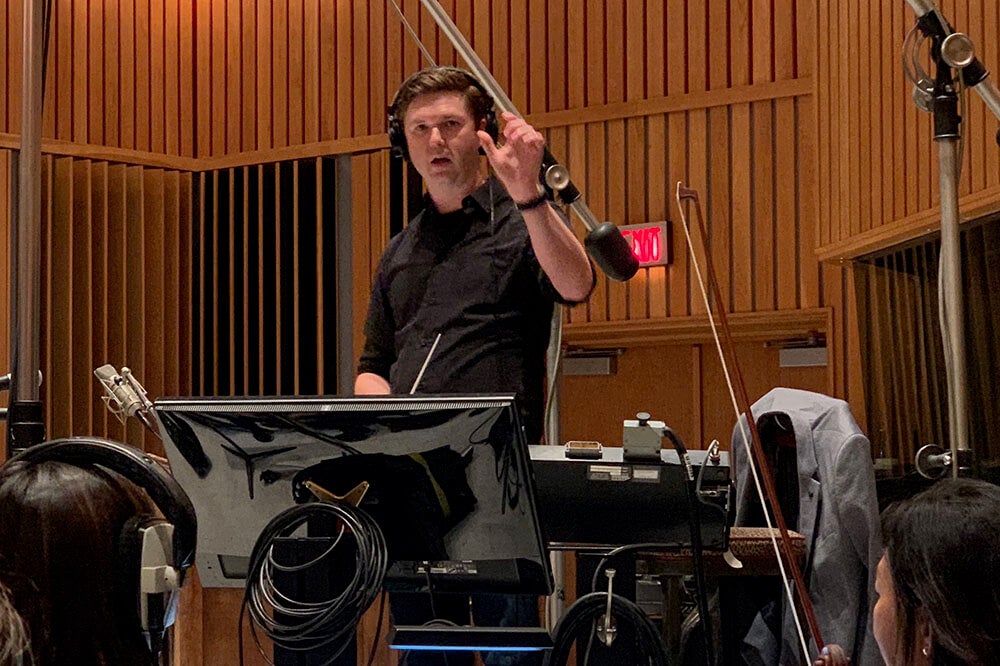
When Jonathan Beard, lecturer in music at The UCLA Herb Alpert School of Music, was originally asked to write the music for the documentary 3 Seconds in October: The Shooting of Andy Lopez, he wasn’t entirely sure he would have the time. But the project was too important to pass up.
And it’s a good thing. 3 Seconds in October just won the Emmy® Award for Societal Concerns from the San Francisco/Northern California Chapter of the National Academy of Television Arts and Sciences.

3 Seconds in October tells two stories. One is the shooting of thirteen-year-old Andy Lopez by sheriff’s deputy Erick Gelhaus in 2013. Lopez was walking home with a toy gun when Deputy Gelhaus yelled at him to drop the toy. He then shot Lopez six times within three seconds. The second story is the investigation of the shooting by the Santa Rosa Police Department, an investigation that led to no charges being filed.
The documentary was about six years in the making before its release. Director Ron Rogers, a former deputy district attorney for Sacramento County, relied on hundreds of community connections in Sonoma County to construct the story. He approached Jonathan Beard both because of Beard’s reputation as a musical storyteller and because of Beard’s local connection.
“I’m from the area and my parents still live there. I knew what the shooting of Andy Lopez did to the community,” said Beard. Still, he was quite busy at the time, including orchestrating music for several feature films. Those large-scale projects occupied much of his time and came with a fair bit of pressure. “Ron really worked with my schedule,” Beard said. “I wanted to make it work. It was a story that needed to be told and it was very meaningful to me.”

Beard’s score for 3 Seconds in October is built around an extended main theme, anchored by a solo cello. It is a somber theme, appropriate for the difficult subject of the death of a child, but it is expressive and flexible, offering enough musical texture to be woven through the entire documentary. Solo cello and solo piano are mixed with electronic media—violin-esque altered sounds that introduce a soft “crying effect” into the score, achieved by bending one note into another. Although somber, the theme develops throughout to leave a touch of hope.
Beard and Rogers took to calling the theme “Elegy for Andy.”
“Working with Ron was a real joy,” said Beard. “He very much trusted me with the music. We had conceptual discussions at the beginning and then he let me get to work. It was a supportive and collaborative environment.”

The Emmy® win was itself collaborative. Regional Emmys® are awarded to teams rather than individuals. And while 3 Seconds in October began as a regional production, it has been picked up by affiliate PBS stations across the country on its way to gaining a national audience.
Beard has orchestrated music for dozens of studio films, including Nope, Doctor Strange: Multiverse of Madness, The Lost City, King Richard, and Respect. Beard maintains his busy professional schedule while teaching audio technology and electronic music in the Music Industry program at The UCLA Herb Alpert School of Music.

“Jonathan is a true UCLA success story,” said Robert Fink, academic associate dean and current chair of the minor in music industry. “He’s UCLA trained as a composer, but his career as a film composer and arranger has given him a much wider range of technological skills to share with our music industry students. His class begins with the basics of acoustics and electronics, introduces students to a wide range of software and hardware tools for creating music, and emphasizes individual creative projects to build mastery.”
Beard himself maintains a much broader music composition profile than “just” major studio films. In addition to releasing an album recently, he premiered his cinematic horror-opera Cesare: Child of Night with Opera UCLA in October 2021.

“Much of the music I’m writing these days is electro-acoustic,” said Beard. “My electronic composition students at UCLA are familiar with my love of combining small acoustic ensembles with original electronic sound design, and that’s very much the spirit in which the music for 3 Seconds was conceived as well.”